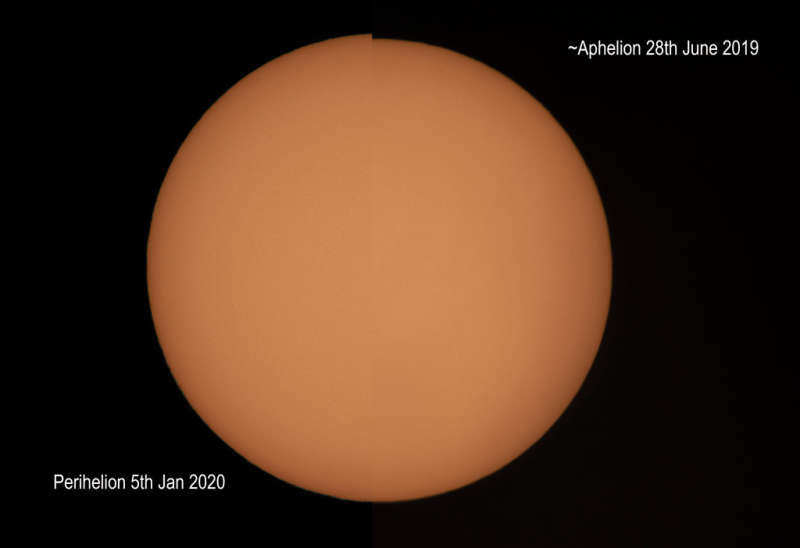Credit & Copyright: Ian Griffin (Otago Museum)
Explanation:
Perihelion
for 2020, the point in Earth's
elliptical orbit
when it is closest to the Sun, occurred on January 5th.
The distance from the Sun doesn't determine the seasons, though.
Those are governed by
the
tilt of Earth's axis of rotation,
so January is still winter in the north and summer in southern hemisphere.
But it does mean that on January 5 the Sun was at its largest
apparent size.
This composite neatly compares two pictures of the Sun,
both taken from planet Earth with the same telescope and camera.
The left half was captured on the date of the 2020 perihelion.
The right was recorded only a week before the July 4 date of the
2019 aphelion, the farthest point in Earth's orbit.
Otherwise difficult to notice, the change in the
Sun's apparent diameter between perihelion and aphelion amounts
to a little over 3 percent.
The 2020 perihelion and
the preceding 2019 aphelion correspond to the closest and farthest
perihelion
and aphelion of the 21st century.
1999 2000 2001 2002 2003 2004 2005 2006 2007 2008 2009 2010 2011 2012 2013 2014 2015 2016 2017 2018 2019 2020 2021 2022 2023 2024 2025 |
Январь Февраль Март Апрель Май Июнь Июль Август Сентябрь Октябрь Ноябрь Декабрь |
NASA Web Site Statements, Warnings, and Disclaimers
NASA Official: Jay Norris. Specific rights apply.
A service of: LHEA at NASA / GSFC
& Michigan Tech. U.
|
Публикации с ключевыми словами:
perihelion - афелий
Публикации со словами: perihelion - афелий | |
См. также:
Все публикации на ту же тему >> | |
